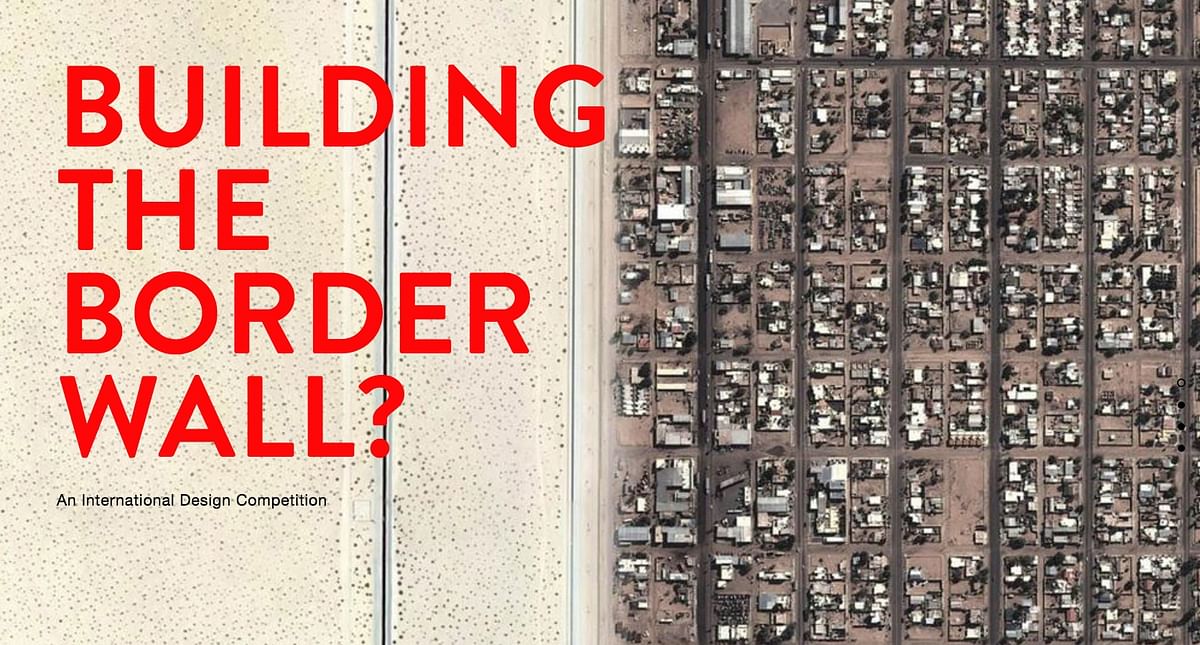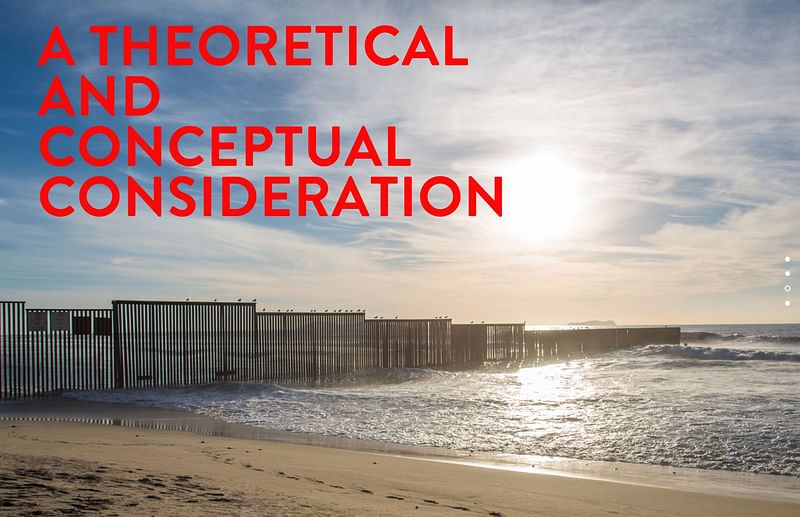US/Mexico border wall competition provokes controversy
By Nicholas Korody|
Wednesday, Mar 16, 2016

Related
Republican presidential candidate Donald Trump dominated another round of primaries last night – with the exception of Ohio – further securing his position as the party’s frontrunner. His polemical campaign continues to provoke criticism from both his own party and from Democrats, as concern over his inflammatory, xenophobic and sexist rhetoric transforms into panic. The debate breached into architecture after a competition was announced last week for design responses to Trump’s call for a wall along the US/Mexico border.
Launched by Third Mind Foundation, a young foundation with little information publicly available, the “Building the Border Wall” has an accompanying brief that states, “By any estimate, the current fencing along America’s southern border is ineffective at best, a dismal failure at worst.” Accordingly, the competition was launched in order “to apply the discipline's problem-solving and aesthetic capacities to delve beyond the rhetoric and seriously consider the implications of this issue.”
In bolded text, the competition brief states that the organizers “take no position on this issue,” are “politically neutral” and “interested in considering the question from a wealth of perspectives.” The open call was sent out to a slew of architecture websites including Bustler.
After some deliberation, the editors of Bustler felt uncomfortable posting the call and replied to its organizers, “We are conflicted about the nature of the competition and fear that it promotes xenophobia. The competition goes against the ethical standards we strive to align ourselves with.”

The organizers replied: “Please note this competition is politically neutral. Our intention is not to stir the debate further. Our desire is to create a healthy dialogue in an effort to stimulate creative and intelligent solutions to this very real problem. A wall already exists at the border, as do 20,000 border patrol agents. We are not calling for a wall to be built specifically. This is an idea's competition for alternative solutions. We are in the process of clarifying our call for entries expressing the neutrality and conceptual openness we are seeking to achieve.”
Meanwhile, after ArchDaily posted the competition, a storm of controversy erupted on social media, directed both at the architecture website and the competition organizers, including architect John Beckmann of the New York-based firm Axis Mundi.
Fabrizio Gallanti and Francisca Insulza of FIG Projects, a Montreal-based practice organized a boycott of ArchDaily and received over 127 likes on Facebook after posting: “#BoycottArchdaily They publish without reading (can they read?) therefore they promote ugly shit like this. It is still unclear whether it is true or a spoof. In both cases it is bad. We all deserve a better mainstream architecture news website. These guys from Archdaily and Plataforma Arquitectura would blow the Farnsworth Villa just to get some extra Internet traffic.”
"Boycott Archdaily. #BoycottArchdaily They publish without reading (can they read?) therefore they promote ugly shit like..."
Posted by FIG on Monday, March 14, 2016

Cue a social media firestorm that went unabated even as ArchDaily posted a series of urgent updates to their posting. On FIG Projects’s Facebook page, as well as Gallanti’s personal feed, an active debate ensued, with criticism hurled at ArchDaily and the competition itself. Gallanti and ArchDaily’s founder David Basulto got into a particularly heated back-and-forth.
Many wondered if the competition was actually serious and not instead intended as parody, a hoax, or trolling. The jury page of the website, for example, includes only deceased people – although according to the organizers these are “placeholders”, typifying the “diversity of the jury” they hope to gather.
On Twitter, another debate (with some of the same characters) erupted. The geographer Javier Arbona, incidentally the former chief editor of Bustler’s sister site Archinect, set off a particularly robust conversation, retweeting the call with, “Issued a call for a wall competition and is ‘politically neutral.’ What.”
Ryan John King of FOAM, Ann Lui of Future Firm, Quilian Riano of the Architecture Lobby, as well as critics Lev Bratishenko and Mimi Zeiger all chimed in, among others.
“Is there nothing good that can come of this?” wondered King. “Spatial innovation could occur within the forum of an ideas competition.”
Riano, meanwhile, asserted, “Guys, this is not about technocratically doing something about a generic ‘border’. [It] is about accepting xenophobic political language to frame a competition on a real site of conflict.”

As far as I can tell, no architects spoke out openly in favor of the competition, with a general consensus that the language framing the call was fraught (and remains so, despite changes over the past few days), although the competition already has an alleged 34 entrants according to CityLab. The heart of the issue, for many, is whether or not “political neutrality” is a viable or even possible stance in regards to Trump’s demands for a border wall, as well as the larger cultural discourse surrounding the GOP candidate. This was well-articulated by the writer Sukjong Hong, who tweeted, "The vast difference in affect & emotion when immigrants hear about a border wall competition & those whose belonging is never questioned."
There have been a range of architectural proposals made in the past for a wall (or other architectural element) along the US/Mexico border – such as this one by Eric Owen Moss, which is not of a Trumpian political bent, per se. For what it's worth, a border wall, as many have stated before, is questionable practically as well as ethically. That being said, as Matthew Kiem noted on Twitter, debating the practicality of a border wall is not just a deflection, since the wall "impacts as much as an image, idea, and affect system as a physical thing."
Looming large over this controversy is a broader discussion of the ethical and political responsibilities of the architect. And it comes at a time that architecture, as a discourse, is involved in a general moment of self-reflection on this, with the upcoming Venice Biennale, for example, organized under a markedly political theme of “Reporting from the Front.”
But while a majority of such conversations have focused on whether architecture can expand beyond formal concerns to also design, in a sense, the broader socioeconomics of a site, this competition frames such questioning a bit differently. At the same time, this is neither an isolated debate nor an unprecedented one. Architecture has long been a weapon in the demagogue’s arsenal – the still controversial legacies of Hitler’s favored architects Albert Speer and Hermann Giesler come to mind immediately.
The competition is troubling in part because it disturbs the rarely-spoken yet widely-held assumption that the discipline’s allegiances, for the most part, are to a broadly-humanitarian and left-leaning politic. As some of the comments on the ArchDaily posting and elsewhere suggest, there are probably more Trump fans in the design community than many imagine.
Finding an architect for his wall might not be that big a challenge for a President Trump after all – and this competition could provide a shortlist.

Share
0 Comments
Comment as :